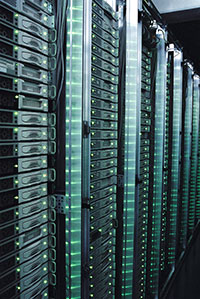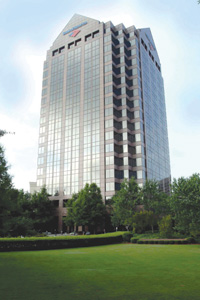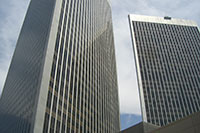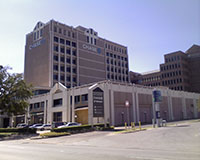view all Case Studies
Switchgear Key to Tornado-Proofing Data Center

After maxing out East Coast sites, 1&1 Internet, a web-hosting business based in Germany, moved to a facility outside of Kansas City, Kan. The company proceeded to build a facility within an existing warehouse to physically isolate the data center from severe weather.
May 9, 2011 -
Power & Communication
After maxing out East Coast sites, 1&1 Internet, a web-hosting business based in Germany, moved to a facility outside of Kansas City, Kan. The company proceeded to build a facility within an existing warehouse to physically isolate the data center from severe weather.
“We recognized that building data center capability in the U.S. was essential to maintaining our promise of optimal speed, connectivity and reliability for website owners here,” says Thorsten Ziegler, head of Data Center U.S. for 1&1.
Three independent and autonomous chilled water plants in a 2+1 redundant configuration cool the facility. Thermal storage buffer tanks can cover for a failed chiller. Computer room air conditioning units in each server room are split evenly between each chilled water system for added redundancy.
It was essential that the electric power system have multiple stages of redundancy.The facility team turned to ASCO Power Technologies for the requirements concerning the use of closed transition transfer technology.
To ensure power reliability, the team selected five 4,000-amp, closed transition transfer switches. Four would power the loads and one would be redundant and act as a swing switch to pick up any of the four other critical loads as needed. Then, rather than parallel the 2,250 kW generators, 1&1 decided the redundant generator would be interconnected to all five electrical systems via high speed static switches and make-before-break PLC-controlled (programmable logic controller) switchgear. This allows every generator, ATS, and switchgear to undergo maintenance one at a time, without dropping a load. Because all loads are a number one priority, the system arrangement allows for N+1 “plus” redundancy.
Finally, the team installed two 625 kVa uninterruptible power systems (UPS). An upgrade to 750 kVa during a phase-two construction plan makes certain that networking and computing equipment doesn’t suffer any down time and allows for additional growth.
“The only way we met our fast-track timeline was everyone’s ability to understand the budget and delivery schedule,” Ziegler says. “Our reputation is based on reliable power, and it’s protected by the resiliency and flexibility of the power system design.”
Next
Read next on FacilitiesNet












